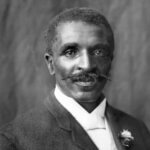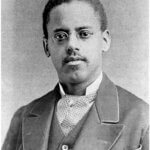
Black History Month provides an annual opportunity to draw the public’s attention towards Black history heroes and celebrate their achievements. Here are some Black History Month facts you may be interested in.
Did you know that it started as a weeklong celebration? Carter Godwin Woodson, the son of former slaves, was one of the first scholars to study African American history and went on to start the Association for the Study of African American Life and History. Known as the father of Black history, Woodson launched the Negro History Week in 1926 (the week coinciding with the birthdays of Frederick Douglass and Abraham Lincoln) to promote awareness about Black life, history, and culture. In the 1960s, this week of awareness was extended to a month (February).
Every year, this African American history month has a theme; this year, it is “The Black Family: Representation, Identity and Diversity.” Science and innovation have also found a place in these themes in the past (1934, 1938, 1939). The achievements and contributions of Black researchers in STEM tend to be forgotten or unrecognized owing to deep-rooted racism. Here, we feature five trailblazing Black scientists who have made lasting contributions in research and leadership.

Agriculture whiz: George Washington Carver
Born a slave, George Washington Carver (1860s–1943) was the first African American to earn a Bachelor of Science degree. He became one of the most highly valued botanists of his time, garnering international recognition for his work. He taught revolutionary crop rotation methods, developed a mobile classroom (Jessup wagon) that allowed him to teach farmers on-site, researched new uses for existing crops, and encouraged sustainable alternatives to expensive crops. He also earned the moniker “Peanut Man,” as he discovered an array of uses for the humble peanut. Carver was also a prolific chemist; using materials and crop plants at hand, he developed hundreds of products like dyestuffs, pastes, and oils. Carver’s groundbreaking work had an enduring impact on crop-growing techniques and positively influenced many Black farmers after the Civil War.

Lighting up lives: Lewis Latimer
While Thomas Edison is widely credited with inventing the lightbulb, did you know that Lewis Latimer (1848–1928) substantially improved upon the invention in the 1880s? Latimer invented and patented a process for making carbon filaments for light bulbs. The carbon filament has more durability and a longer life than earlier filaments. Latimer’s filament in incandescent light bulbs made the bulbs more affordable and safer to use.

The gift of sight: Patricia Bath
Dr. Patricia Bath (1942–2019), an American ophthalmologist and laser scientist, was the first female African American physician to receive a patent for a medical invention. Bath pioneered the discipline of community ophthalmology, which trains volunteers to offer primary eye care to marginalized populations. The concept is now applied around the world, saving the sight of thousands who would have otherwise gone undiagnosed and untreated. Her invention of the Laserphaco probe to remove cataracts continues to be used worldwide.

Navigation and location: Gladys West
Gladys West (born 1930) started her career as a human computer for the US military, solving complex equations longhand, before the electronic era. In the 1970s, she programmed an IBM computer to precisely model the irregular shape of Earth. The data generated by West’s complex algorithms became the basis for GPS. West’s contribution to this technology, which is so deeply integrated in our daily lives today, would have gone largely unrecognized had she not casually mentioned her work to her former sorority as recently as 2017! The next time you look up directions on your mobile phone or tag your location on social media, remember the Black researcher who made this possible!

Space doctor: Mae Jamison
Mae Jemison (born 1956) is the first African American woman to reach space. Besides being a NASA astronaut, she is also a physician and Peace Corps volunteer. After training with NASA, Jemison and six other astronauts orbited Earth 126 times on the Endeavour. During her space stint, Jemison helped carry out experiments on bone cells and the development of tadpoles in zero gravity. Fun fact: Jemison even has a Lego figurine made in her honor!
These are just a few of the most influential Black researchers, chosen here to capture diverse disciplines across two centuries. Many of them overcame persecution and adversities from the post–Civil War era. Fast forward to the early 2000s, and millions of Black researchers continue to face discrimination. One study shows that Black and Latino students quit STEM majors at nearly twice the rate of white students. Further, Black STEM representation has been found to be dipping after a few years of gains in the early 2000s. While income disparities might be attributed to some cases, an environment of discrimination and bias in STEM appears to be discouraging minority students from the field. Lack of funding for projects, limited access to literature due to paywalls, and high article processing fees are huge stumbling blocks, as Nigerian public health professional Dr. Fagbule notes. In a moving post, a Black African woman researcher mentions loneliness, racism, and “misogynoir” (racialized sexism) faced in a foreign country. Often, young Black researchers feel like they do not belong in the academic community. To make matters more precarious, marginalization worsens mental health issues.
In a CACTUS survey on overall research culture and mental well-being of researchers worldwide, 60% mixed-race researchers reported experiencing discrimination, harassment, or bullying at work. A high proportion stated they were concerned about external and political developments that may impact their research practice. Those with such concerns were highly likely to be working in Africa and the Americas. A closer analysis drawing from the survey dissected open responses to understand perceptions on fostering a supportive research environment. A prominently recurring theme in response to suggestions for ensuring a healthy work environment for researchers was “Implement measures to promote equality and prevent harassment, discrimination, and bullying.”
Cultivating a Sense of Belonging
To increase the retention of Black researchers in academia, administrators have the responsibility of making them feel respected, welcomed, and valued. Stakeholders should encourage open conversations about the reasons underlying feelings of exclusion. Of late, open discussions on mental health and inclusion are taking place. Take for instance R Voice, a nurturing global community for researchers to share thoughts and stories, have open conversations, and connect over similar problems. It is a place where diversity is cherished and valued, also serving as a platform focusing on the mental health and well-being of researchers. Connecting with like-minded researchers and sharing thoughts and experiences on such forums can enrich researcher life and nurture motivation.
A discussion of Black researchers in STEM would be incomplete without the recent Black solidarity hashtag movement spurred by the Central Park birdwatching incident. Starting with #BlackBirdersWeek—a weeklong series of online events in response to the incident—numerous such events sprang up (#BlackBotanistWeek, #BlackInMarineScienceWeek, etc.) to showcase Black people with outdoor hobbies and careers. These events demonstrate the role of solidarity in providing a voice, directing attention to disparities, and dispelling pre-conceived notions about race and color.
The world has come a long way from the abolition of slavery and the fight for civil rights. However, there is still an ongoing diversity problem in academia. Movements such as Black History Month serve to boost Black visibility and inspire researchers. Meanwhile, platforms like R Voice provide support to researchers maneuvering diversity-impoverished scenarios. Equality should no longer be something to strive for but instead be the very warp and weft of the fabric of academia.



